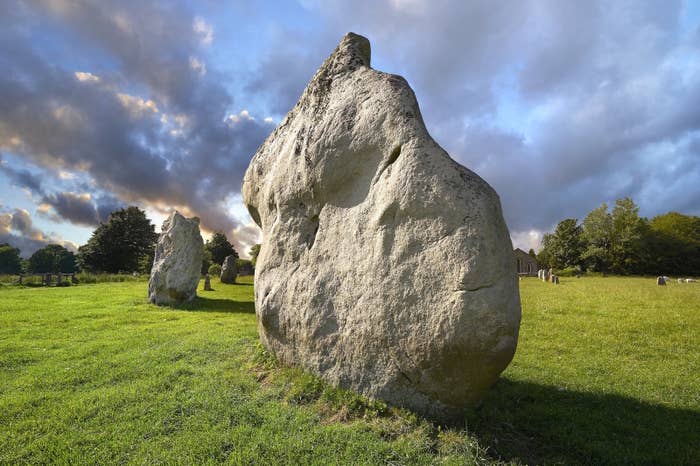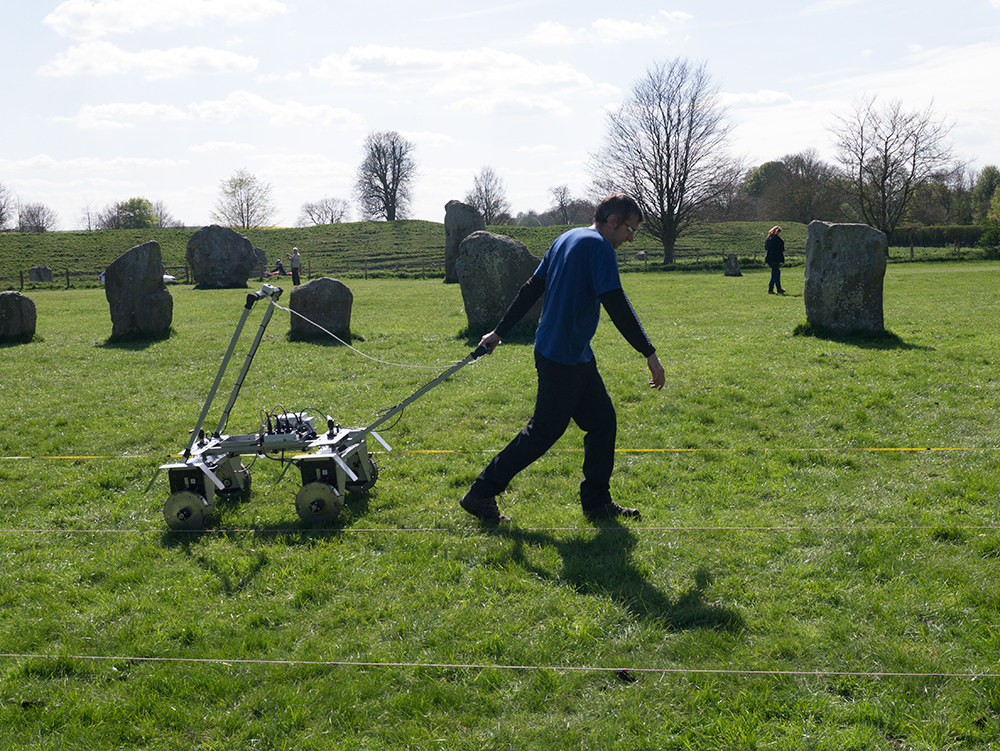
An ancient square monument has been found beneath a huge stone circle in southwest England, suggesting that the prehistoric site is much older, and was in use for far longer, than was previously believed.
It's the first time a square monument of anything like this scale has been discovered from this period.
The monument at Avebury, in Wiltshire, is one of the largest constructions of its kind in Europe and a UNESCO world heritage site. It consists of a huge earthwork ditch and ramp, in a circle about a mile across, with a circle of ancient stones inside it. It's estimated to be about 4,500 years old, from the late Stone Age or "Neolithic" period.
It's been studied by hundreds of archaeologists since the 17th century. In the late 1930s, a researcher called Alexander Keiller found evidence of a huge, ancient obelisk and a few oddly positioned stones in the centre of the circle. But war broke out and it was never fully investigated.
Now, using ground-penetrating radar, scientists from the University of Leicester and University of Southampton have completed Keiller's work, and found that not only was the obelisk surrounded by a strange square of stones, but also that there was a building – perhaps a house – built leaning against the obelisk.

"It is quite exciting," Vicky Cummings, an archaeologist at the University of Central Lancashire who didn't work on the research, told BuzzFeed News. "It's a monument that is unique.
"You get types of monuments, and in the late Neolithic people built circular things – so the fact that there’s something square in the middle of the circle, essentially it’s a new thing. You have to get a grip on why people are doing something completely different. I don't know of any parallels."
Keiller had spotted the house, or construction, but he had assumed it was a medieval farm building built against the obelisk. But the Leicester researchers say that it's between 600 and 1,000 years older than the stone circle itself. Mark Gillings, an archaeologist at Leicester who led the research, told BuzzFeed News: "It’s not surprising that they didn’t realise, but it looks like we’ve got a dyed-in-the-wool Neolithic house structure, possibly constructed a millennium earlier.

"It’s what the rest [of Avebury] could have radiated out from, like ripples from a pond." By the time the stones were being put in place, the building was probably just a ruin or even a few "lumps and bumps" in the ground, said Gillings, but it was obviously respected.
"We don’t know what the structure was for," he said. "It could have been a dwelling, or it could have been something much more symbolic. Given that it could have been 700 years old when the stones went up, it could have been seen as the house of the ancestors, something that's important to respect."
The team is currently compiling its research into a paper for academic publishing, which could be a year or two away, but you can read a full technical report here. Gillings said the work so far was being released so that the views and opinions of other archeologists could be heard. "We thought it was too important to sit on," he told BuzzFeed News.
Exactly what sites like Avebury and the more famous Stonehenge were for has long been a subject of debate, said Cummings. "There are two popular ways of thinking about things," she said. "The first is they were places of worship. Stone circles were especially associated with the dead – not burial, but rituals associated with the dead. That’s still a very popular idea.
"But both Avebury and Stonehenge involve massive investments of time, millions and millions of hours, Stonehenge because of the huge complexity of its stones and Avebury because of the huge bank and ditch. People were coming together and working and building, part of the social process in the Neolithic." She said that it should be thought of less as a cathedral, a thing that you build and is finished, and more as a sort of ongoing project, almost a living, unending artwork.
"The take-home message is that Avebury and sites like it are far more complex than we thought," said Gillings. "We see these monuments of stone and we think of them as timeless and fixed, and we think there's a single answer to the mystery of their creation.
"But what we see is four or five different stages of its construction, where stones are being moved and repositioned over hundreds of years. It's one of the most remarkable Neolithic monument complexes in Europe."
